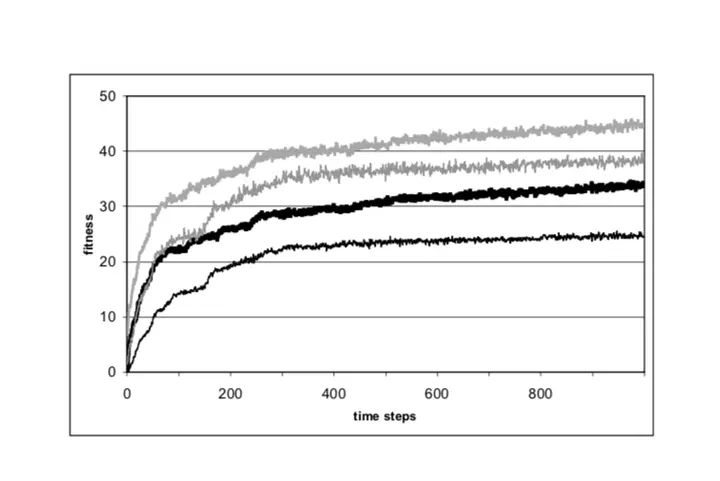The evolution of pain

Abstract
We describe two simple simulations in which artificial organisms evolve an ability to respond to inputs from within their own body and these inputs themselves can evolve. In the first simulation the organisms develop an ability to respond to a pain signal caused by body damage by stopping looking for food when they feel pain since resting while the body is damaged accelerates healing of the body and increases the individual’s survival chances. In the second simulation the pain signal itself evolves, that is, the body develops a tendency to send pain signals to the nervous system when the body is damaged. The results are discussed in terms of an internal robotics in which the robot’s body has an internal structure and not only an external morphology and the neural network that controls the robot’s behavior responds to inputs both from the external environment and from within the body.
Type
Publication
Acerbi A., Parisi D. (2007), The evolution of pain, in Almeida e Costa, F. et al. (Eds.), Advances in Artificial Life. Proceedings of ECAL 2007, Berlin, Springer, pp. 816 – 824